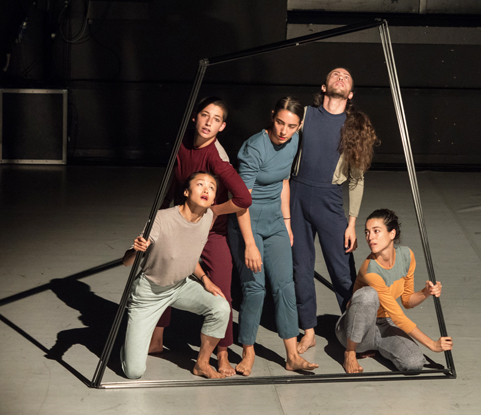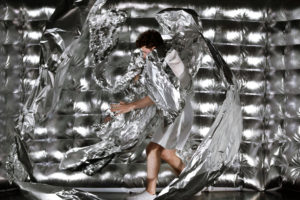Italy: Winter 2017 - Vancouver Ballet Society
- Home
- City Reports 2015 - 2019
- Italy: Winter 2017

by Silvia Poletti
The formula “… and Friends” for ballet stars producing their own mixed bills, which was started in the 1970s by Rudolf Nureyev, has now become a strong strategy for those dancers whose popularity rivals that of pop stars.
Every summer, Roberto Bolle and Friends tours in arenas and open-air venues, drawing an incredible number of spectators — at the Verona Arena, he was able to achieve two sold-out shows with more than 12,000 people at each one. Because of this success, renowned festivals have invited him to present his show, getting great results at the box office without the effort of mounting a full-length production or of presenting a big company. Spoleto Two World Festival (once celebrated for its dance program, but now without direction or focus) presented Roberto Bolle and Friends to great success in July 2017.
Another ballet star popular in Italy is Svetlana Zakharova, whose Zakharova and Friends gala revitalized the Ravenna Festival dance section, also in July 2017, with a performance that attracted more than 2,000 audience members at the De André Arena.
Not every popular ballet dancer gets the same result, as was the case for Eleonora Abbagnato, current Paris Opera étoile and director of Rome Opera Ballet. Abbagnato’s popularity has been growing for years thanks to her presence as a judge in reality television talent shows and her red carpet glamour (she models in advertisements for the Dolce and Gabbana fashion house), yet her own gala did not gather nearly as many people and the choreographic program dissatisfied the audiences of Spoleto and Civitanova Danza festivals.
Apart from two pieces by Angelin Preljocaj — the strong mystic duet Annonciation and the kiss duet from Le Parc — the weak first part of her show was based upon Stabat Mater by her former Paris Opera colleague Benjamin Pech, a bizarre Tosca by Julien Lestel, an emerging name from France, and her own first attempt at choreography, a neoclassical duet with expressive touch based upon Giacomo Puccini’s Madama Butterfly aria, Un bel dì vedremo.
This pop star phenomenon mastered by Bolle risks making ballet into something that is widely considered as entertainment rather than art, shaped on acrobatic tricks and athletic bravura. On the other hand, many contemporary dance shows seem more and more conceptual and out of touch with general audiences, as they are too often based upon scientific postulates and intellectual references that often lose their way in the choreography.
In July in Bolzano, at the foot of the wonderful Dolomite Mountains, the lively Bolzano Danza festival confirmed once again the dangers of this latter trend. If an artist does choose to take a position on social, ethical or political themes, it is absolutely necessary they master perfectly both the medium (i.e., the dance) and the subject. If they do so, whatever ideas the artist can sustain within the theatrical experience will be appreciated as fruit of a coherent inner analysis. Otherwise, the work can seem superficial.

This was the case with the recent show by Marina Mascarell, a young Spanish dancemaker who is currently on the rise thanks in part to the endorsement of her mentor Jirí Kylián. Central to her work is the development of social or anthropological themes. In Three Times Rebel, the theme is the female condition and the pornographic exploitation of body and gender. Mascarell has studied the literature and analyzed theories, but, in her stage work, she only occasionally manages to get academic concepts to flow together with the choreographic material.
The idea of forcing the five dancers (four women and one man) into a semi-mobile changing structure that paralyses them and forces them to claustrophobically find their own space is a good one. Also interesting is the way she shapes the anxious bodies by taking apart their oppressed movements, manipulated by each other. However, the juxtaposition of quotes from Virginia Woolf and Sylvia Plath that the dancers recite while standing still in front of the audience, stopping the flow of movement, appeared didactic, an effect worsened by the trivial allusion to some of American President Trump’s sexist comments. The dull contrast between physically hard dance and less dynamic speech made the show flat and predictable.
The same happens, in a similar way, in the latest piece by Olivier Dubois, 7PourRien (7forNothing), which seemed just sketched in though it was apparently a premiere. The French choreographer focuses on the theme of the seven deadly sins (lust, gluttony, greed, sloth, wrath, envy and pride) in a show for young audiences conceived to teach the concept of free will. A very challenging task, but not too surprising considering Dubois’ reputation as the latest bad boy of the French conceptual new wave of dance: he is accustomed to risk-taking.
Unfortunately, 7PourRien was an assembly of technical wrinkles, theatrical winks and very poor dance. Dressed and surrounded by metres of tin foil shaped into strange giant creatures and hanging all around the stage, three performers — two women and a man — portray in a very cryptic way the deadly sins. Slow, never-ending twirls recall sloth; a woman in high heels and a sparkling sheath dress who winks and sways her hips is obviously intended to represent lust. To evoke gluttony, two dancers eat pink cotton candy and suck their fingers, the sounds amplified through speakers; the sequence seems a banal reference to Pina Bausch, who would have performers repeat ordinary gestures while sending ironic glances to the audience.
The deeper meaning of Dubois’ overt symbolism is hard to read, no doubt also for the young people for whom the work is intended; the allusions are lost in the patchwork of pantomime, a little dance and poems declaimed in a chaotic mix of languages (English, Italian, German, French). Hard rock music (a mix including Billy Idol) pounds as the three dancers run up and down the stage, while the tin foil flies flashing all around. Where is the focus of 7PourRien? What does Dubois really have to say? In this inconclusive piece, there is no deeper meaning beyond the obvious.

Photo: F. Iovino
